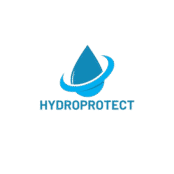Understanding Hotmelt Roof Waterproofing
Hotmelt roof waterproofing is emerging as a top choice among hall and warehouse owners, developers, and property managers aiming for long-lasting and effective roofing solutions. The secret to its increasing popularity lies in its robust, seamless, and cost-effective nature. In this comprehensive guide, we’ll explore the advantages of hotmelt technology over conventional waterproofing methods, its components, and why it may just be the perfect solution for your roofing needs.
The Components of Hotmelt Systems
Hotmelt roof waterproofing utilizes a combination of materials designed to create a seamless, impermeable barrier. Understanding these components is key to appreciating the robustness of this system.
Hotmelt Compound
The hotmelt compound forms the core of the waterproofing system. This bitumen-based material is heated on-site and applied as a hot liquid. As it cools, it solidifies into a solid, rubber-like material that is both flexible and durable. The seamless application ensures no weak points or joints that could potentially lead to leaks.
Reinforcement Layer
To enhance the strength and durability of the hotmelt system, a reinforcement layer is added. This is commonly made of a high-performance polyester mesh that imparts additional strength, allowing the roof to handle thermal movements and minor structural shifts without damage.
Protection Layer
A protection layer is essential to guard the hotmelt system against mechanical damage, ultraviolet (UV) rays, and weathering. Typically, this is achieved using mineral aggregate, paving slabs, or ballast, ensuring the longevity and performance of the waterproofing system.
Advantages of Hotmelt Roof Waterproofing
Hotmelt systems offer several benefits that make them an attractive choice over traditional roofing methods. Let’s delve into these advantages to see why they might be the perfect solution for your building project.
Durability and Longevity
One of the most significant advantages of hotmelt systems is their exceptional durability. Designed to last the life of the building, these systems can remain watertight for over 30 years, offering excellent value for money. Unlike other systems that may require frequent repairs or replacements, hotmelt roofing provides peace of mind and minimal maintenance needs.
Seamless Application
The hot application process ensures a seamless, monolithic membrane that eliminates the potential for water ingress through joints or seams. This is particularly beneficial in roofing applications where complex details or penetrations exist, as it ensures complete coverage without weak spots.
Cost-Effective Solution
Though the initial cost of hotmelt systems may be higher than some alternatives, the long-term savings are substantial. Reduced maintenance, fewer repairs, and extended life expectancy all contribute to a lower total cost of ownership over the building’s lifecycle. Additionally, because of the straightforward and quick installation process, labor costs can be effectively managed.
Environmental Benefits
Hotmelt systems are also environmentally friendly options. The materials used are often 100% recyclable, contributing to reduced landfill usage post-demolition. Moreover, the energy efficiency provided by a well-insulated roof can lead to decreased energy consumption, lowering your building’s carbon footprint.
When to Choose Hotmelt Roof Waterproofing
While hotmelt systems offer numerous benefits, they are not always the right fit for every project. Consider the following factors to determine whether this solution is suitable for your roofing needs.
Building Type and Use
Hotmelt waterproofing is perfect for buildings with large roofs that experience considerable foot traffic, such as commercial warehouses and industrial facilities. Their robustness makes them ideal for complex roof designs where watertightness is crucial, such as green roofs or terraces.
Climate Considerations
These systems excel in harsh climates as they can withstand extreme temperature variations and UV exposure without deteriorating. If your building is located in an area prone to heavy rainfall or snowfall, a hotmelt system can ensure reliable, leak-free performance.
Installation and Maintenance of Hotmelt Systems
Proper installation and occasional maintenance are vital for maximizing the benefits of your hotmelt roof waterproofing system. Here are some considerations to keep in mind.
Professional Installation
Hotmelt systems should be installed by certified professionals to ensure quality and reliability. Proper heating and application of the compound are crucial, as well as ensuring full adhesion to the substrate and seamless coverage around all roof details.
Routine Inspections
Although hotmelt roofs require minimal maintenance, regular inspections can help spot potential issues before they become major problems. Checking for ponding water, damage from extreme weather, and ensuring the protection layer remains intact will help preserve the integrity of your roofing system.
Summary
Hotmelt roof waterproofing offers a durable, cost-effective, and environmentally friendly solution suitable for warehouses, commercial spaces, and complex roof designs. Its seamless application provides exceptional longevity, reducing maintenance and repair needs over time. Ideal for larger roofs and challenging climates, this solution ensures leak-free performance and a lower total cost of ownership, making it a wise choice for discerning property owners and developers.

